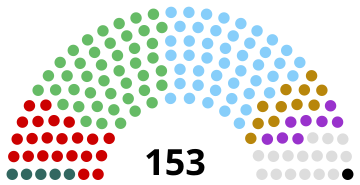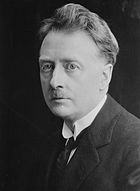June 1927 Irish general election
| |||||||||||||||||||||||||||||||||||||||||||||||||||||||||||||||||||||||||||||||||||||||||||||||||||||||||||||
153 seats in Dáil Éireann[a] 77 seats needed for a majority | |||||||||||||||||||||||||||||||||||||||||||||||||||||||||||||||||||||||||||||||||||||||||||||||||||||||||||||
|---|---|---|---|---|---|---|---|---|---|---|---|---|---|---|---|---|---|---|---|---|---|---|---|---|---|---|---|---|---|---|---|---|---|---|---|---|---|---|---|---|---|---|---|---|---|---|---|---|---|---|---|---|---|---|---|---|---|---|---|---|---|---|---|---|---|---|---|---|---|---|---|---|---|---|---|---|---|---|---|---|---|---|---|---|---|---|---|---|---|---|---|---|---|---|---|---|---|---|---|---|---|---|---|---|---|---|---|---|---|
| Turnout | 68.1% | ||||||||||||||||||||||||||||||||||||||||||||||||||||||||||||||||||||||||||||||||||||||||||||||||||||||||||||
| |||||||||||||||||||||||||||||||||||||||||||||||||||||||||||||||||||||||||||||||||||||||||||||||||||||||||||||
 Percentage of seats gained by each of the five biggest parties, and number of seats gained by smaller parties and independents. | |||||||||||||||||||||||||||||||||||||||||||||||||||||||||||||||||||||||||||||||||||||||||||||||||||||||||||||
| |||||||||||||||||||||||||||||||||||||||||||||||||||||||||||||||||||||||||||||||||||||||||||||||||||||||||||||
The June 1927 Irish general election was held on Thursday, 9 June. The newly elected members of the 5th Dáil assembled at Leinster House on 23 June, at which W. T. Cosgrave of Cumann na nGaedheal was reappointed as President of the Executive Council of the Irish Free State, alongside his reconstituted Executive Council.
Following the election, Fianna Fáil took its seats in the Dáil on 12 August 1927.[3] Fianna Fáil had been formed a year earlier when Éamon de Valera, leader of the abstentionist Anti-Treaty Sinn Féin, failed to convince the party to take their seats if and when the Oath of Allegiance were abolished. Most of Sinn Féin's TDs, as well as the bulk of its support, shifted to Fianna Fáil.
The impact of this shift saw Sinn Féin all but decimated; it was reduced to five seats. This was for many years the end of the party as a major force in the southern part of the island; it would not win more than 10 seats at an election until 2011, by which time it had undergone fundamental transformation. This election cemented Fianna Fáil as a major party; it and Cumann na nGaedheal/Fine Gael remained the two major parties in Ireland until 2020. Fianna Fáil's decision to take up its seats ended Cumann na nGaedheal's working majority, forcing Cosgrave into a minority government which proved unstable and lasted just three months. The 5th Dáil was dissolved on 25 August for an early election in September 1927.
Result
| Election to the 5th Dáil – 9 June 1927[4][5][6] | ||||||||
|---|---|---|---|---|---|---|---|---|
 | ||||||||
| Party | Leader | Seats | ± | % of seats |
First pref. votes |
% FPv | ±% | |
| Cumann na nGaedheal | W. T. Cosgrave | 47[a] | –16 | 30.7 | 314,703 | 27.4 | –11.6 | |
| Fianna Fáil | Éamon de Valera | 44 | New | 28.7 | 299,486 | 26.2 | New | |
| Labour | Thomas Johnson | 22 | +8 | 14.4 | 143,849 | 12.6 | +2.0 | |
| Farmers' Party | Michael Heffernan | 11 | –4 | 7.2 | 101,955 | 8.9 | –3.2 | |
| National League | William Redmond | 8 | New | 5.2 | 83,598 | 7.3 | New | |
| Sinn Féin | John J. O'Kelly | 5[b] | –39 | 3.3 | 41,401 | 3.6 | –23.8 | |
| Clann Éireann | William Magennis | 0 | New | 0 | 5,527 | 0.5 | New | |
| Blind Men's Party | 0 | New | 0 | 1,559 | 0.1 | New | ||
| Town Tenants' Association | 0 | 0 | 0 | 1,012 | 0.1 | –0.1 | ||
| Independent politicians in Ireland | N/A | 16 | +3 | 10.4 | 153,370 | 13.4 | +5.3 | |
| Spoilt votes | 31,337 | — | — | |||||
| Total | 153[a] | 0 | 100 | 1,177,797 | 100 | — | ||
| Electorate/Turnout | 1,730,177 | 68.1% | — | |||||
Voting summary
Seats summary
Government formation
When the 5th Dáil first met on 23 June 1927, there were 50 TDs still abstaining. Cumann na nGaedheal formed the 3rd Executive Council of the Irish Free State with the support of the Farmers' Party and 13 Independents. This government proved unstable once Fianna Fáil took their seats.
Changes in membership
First time TDs
- Tadhg Crowley
- Patrick Boland
- Andrew Fogarty
- John Jinks
- Michael Keyes
- Michael Óg McFadden
- Thomas Mullins
- Patrick O'Dowd
- Matthew O'Reilly
- Timothy Quill
- Jasper Wolfe
Outgoing TDs
- Cornelius Connolly (Retired)
- Patrick McFadden (Lost seat)
Notes
- ^ a b c d Including Michael Hayes, returned automatically for the National University of Ireland as outgoing Ceann Comhairle, under Art. 21 of the Constitution, as amended by the Constitution (Amendment No. 2) Act 1927, and s. 2 of the Electoral (Amendment) Act 1927.[1][2]
- ^ Results given for Sinn Féin here are compared to those won by Republicans in the previous election.
References
- ^ Constitution (Amendment No. 2) Act 1927, s. 1: Re-election at general election of outgoing Chairman of Dáil Eireann (No. 6 of 1927, s. 1). Enacted on 19 March 1927. Act of the Oireachtas. Retrieved from Irish Statute Book on 8 April 2021.
- ^ Electoral (Amendment) Act 1927, s. 2: Re-election of outgoing Ceann Comhairle (No. 21 of 1927, s. 2). Enacted on 22 May 1927. Act of the Oireachtas. Retrieved from Irish Statute Book.
- ^ "New Deputies take their seats – Dáil Éireann (5th Dáil) – Vol. 20 No. 20". 12 August 1927. Archived from the original on 11 December 2017. Retrieved 11 July 2022.
{{cite web}}:|archive-date=/|archive-url=timestamp mismatch; 26 December 2017 suggested (help) - ^ "5th Dáil June 1927 General Election". ElectionsIreland.org. Archived from the original on 28 May 2009. Retrieved 5 April 2009.
- ^ "Dáil elections since 1918". ARK Northern Ireland. Archived from the original on 27 November 2020. Retrieved 13 April 2009.
- ^ Nohlen, Dieter; Stöver, Philip (2010). Elections in Europe: A data handbook. pp. 1010–1017. ISBN 978-3-8329-5609-7.







